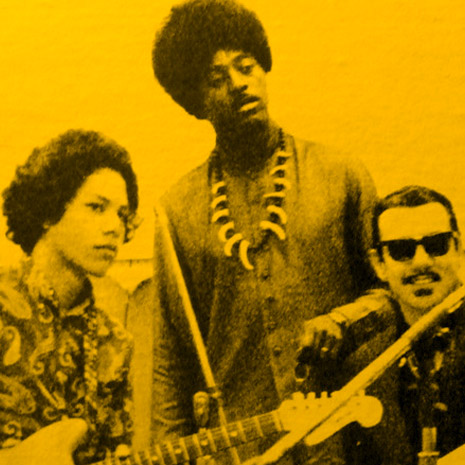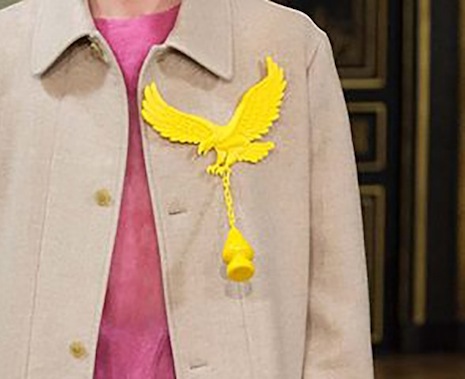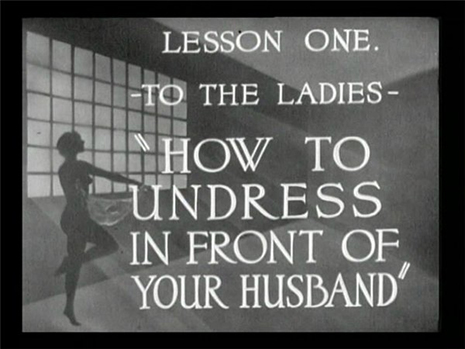
The short film you’re about to take a look at is more than just a cheap, extraordinarily sexist exploitation film from 1937. Indeed, How to Undress in Front of Your Husband is most certainly that, but if you can put the stupidity of the attitudes expressed in the film aside momentarily, you’ll notice that it also happens to be surrounded by a bunch of weird, perhaps even interesting facts. Case it point: It involves the huckster distributer of Reefer Madness and his salacious screen writing wife, the film bears a mysterious similarity to a LIFE magazine article featuring photos of ex-burlesque stripper, June St. Clair made in the same year, one of the lead characters (such as there are characters) is the fourth wife of John Barrymore and the other lead character was an ahead-of-her-time suffragette.
and his salacious screen writing wife, the film bears a mysterious similarity to a LIFE magazine article featuring photos of ex-burlesque stripper, June St. Clair made in the same year, one of the lead characters (such as there are characters) is the fourth wife of John Barrymore and the other lead character was an ahead-of-her-time suffragette.
I’m not a big fan of Internet lists, but I’m presenting the following one as a matter of expediency. Believe it or not, there’s a lot to cover here for a smutty little fourteen minute film.
1. How to Undress in Front of Your Husband is an exploitation film: To cut right to the chase, this movie is about a lecherous, camera-wielding Peeping Tom and two different women taking their clothes off in preparation for bed. According to the film’s male narrator, there is a right way and a wrong way for a woman to do this if she wants to properly entice her husband, and each woman demonstrates her pre-bed ritual as the narrator looks on through a key-hole. It’s really an awful flick, but notable if you’re interested in this particular fringe nook of filmmaking, truly the bottom of the creative barrel.

A reproduction of an original Reefer Madness poster.
2. The Reefer Madness connection: How to Undress in Front of Your Husband was directed by Dwain Esper, the same fiendish mind who brought us everybody’s favorite joint-sploitation film, Reefer Madness along with Maniac, Sex Madness and Marihuana. Esper was a sleazy but fascinating persona. A serious snake-oil-salesman-type, he traveled around the country “four walling” his racy films in rented tents and theaters in order to work his way around the 1934 Production Code that wouldn’t allow his work to be distributed through conventional channels. In fact, the very title of the film may very well have been part of what was a typical strategy for Esper to get around movie censorship. By billing his screenings as “educational,” as in WE’RE HERE TO EDUCATE YOU ABOUT THE HORRORS OF OPIUM!!!!, he and others like him could attempt to pass off their salacious materials as important public service announcements. After taunting entire towns with tantalizing “Adults Only” promotions, Esper would screen whatever piece of smut he was pitching for a few days, count his money, pack up his gear and get himself the hell out of Dodge, preferably before the town’s morality police could do it for him.
Esper’s wife Hildegarde Stadie, herself an ex-carnival performer who in her younger years often posed nude with a python around her neck to entice people into buying her Uncle’s cure-all tonics, wrote How to Undress in Front of Your Husband as she did many others in the Esper repertoire. Neither of them actually wrote Reefer Madness, by the way. Esper simply bought the film, originally funded by a church group with the intention of legitimately steering people away from the deadly smoke. Esper realized how much of exploitative payday would come from screening the very bad but very “shocking” movie. You can read three Esper screenplays in Marihuana, Motherhood & Madness from 1998.
from 1998.
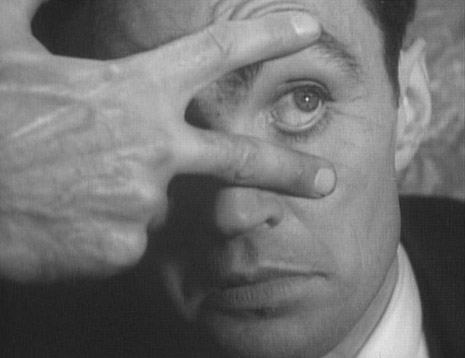
Cinemaniac Dwain Esper
3. The LIFE article: Interestingly, an article, also from 1937, appeared in the February 17th issue of LIFE magazine depicting almost the exact scenario of the Dwain Esper film and pictures from the article have circulated around the internet over the past few years. Promoting one Allen Gilbert who was ostensibly trying to get the word out about his “Manhattan School of Undressing,” the article shows two different women in the act of preparing for bed, one clumsily, the other, ex-burlesque stripper June St. Clair, gracefully. The conceit of the article is that because of rising divorce rates, women needed to place to go where they could learn to be more sensual when getting ready to slip into bed with their husbands. No mention is made of the husband’s role in the pre-bed ritual, although, due to reader demand and, in some cases, outrage, a subsequent issue of LIFE included an article with men in the same scenario. It seems almost impossible to imagine that the article and the film below weren’t somehow related, although I can find no evidence to substantiate that claim.
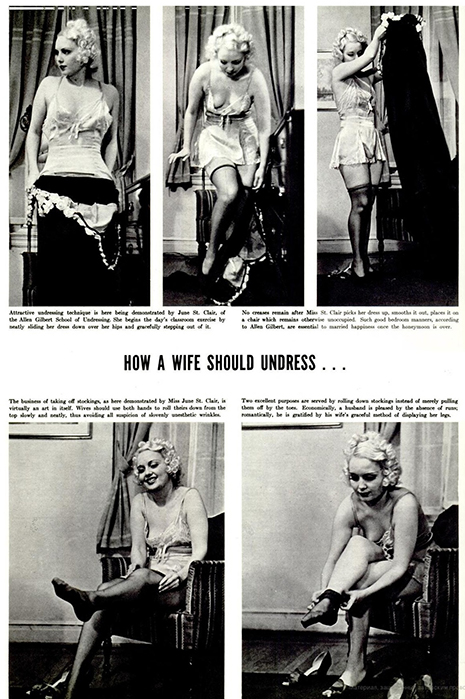
The right way for a woman to undress in front of her husband according to a 1937 article in LIFE magazine.
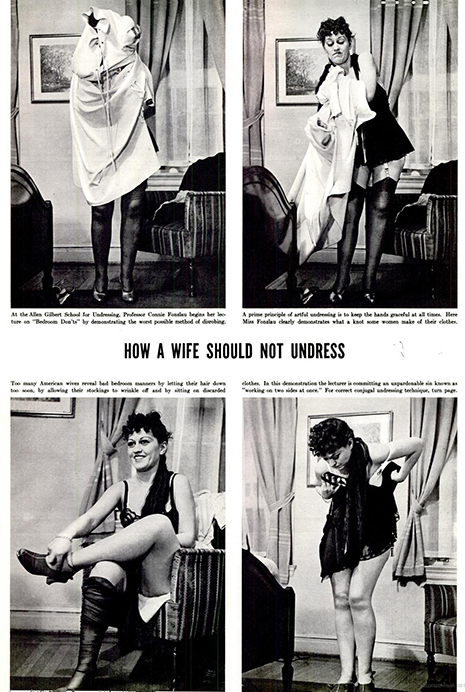
The wrong way for a woman to undress in front of her husband according to a 1937 article in LIFE magazine.
4. John Barrymore’s fourth wife: Yes, the lead role the film went to Elaine Barrie, alcoholic actor John Barrymore’s fourth wife at the time. Famously, a youthful Barrie (she had the last name of Jacobs at this point) kindled her relationship with Barrymore through a letter asking for an interview with the aging Svengali actor who was in the hospital attempting to dry up at the age of 53. Barrie continued to “interview” Barrymore, and the two eventually married in 1936. Their relationship was a press free-for-all (Barrie was 30 years younger than Barrymore and their relationship began when Barrymore was still married to his third wife) and the Espers were almost certainly capitalizing on her new-found national attention when they cast Barrie in the roll of the ideal wife in How to Undress in Front of Your Husband. The film’s narrator vocally ogles and hubba-hubbas his way through Barrie’s downright scandalous-for-1937 appearances in the film as she sensually quaffs her hair, applies pre-bed perfume, rolls down her stockings and shimmies out of her clothing while strategically never becoming completely nude. The purveyor of the pervy voiceover is of course pleased. “She not only knows how to get a husband, but how to keep him,” he says.
5. The suffragette: Last but not least, one of the most interesting things about this weird little piece is the appearance of former stage and vaudeville actress, Trixie Friganza. She plays the role of the not-so-sensual clothes remover; the representative of “how not to undress in front of your husband,” and the narrator says some truly vile things about her while she goes through her supposed pre-bed ritual. Really, it’s cringe–inducing and mean-spirited. Friganza, a large woman, seems to have made career out of poking fun at her own size, but she was also an outspoken women’s rights activist often using her public notoriety to speak about the arts and for economically downtrodden. She was progressive for the time, even keeping her maiden name and continuing to work after marrying in her early life, a fairly bold statement in the early 1900’s. Friganza’s on screen appearance in How to Undress in Front of Your Husband was one of her last, as she ended her film career in 1940 due to complications with arthritis. After a long career she died in relative obscurity in 1955.
So there you have it, everything I know about the oddball film. For better or for worse, here’s How to Undress in Front of Your Husband in all its schlocky glory. It skips just a tad at the beginning, but extensive Internet searching yielded this as the best copy.








.jpg)
.jpg)
.jpg)
.jpg)
.jpg)



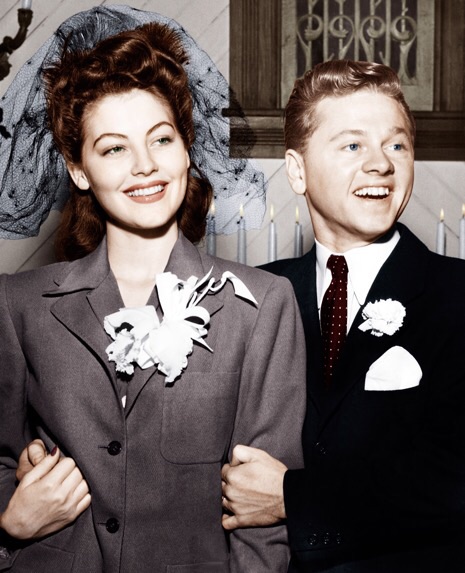
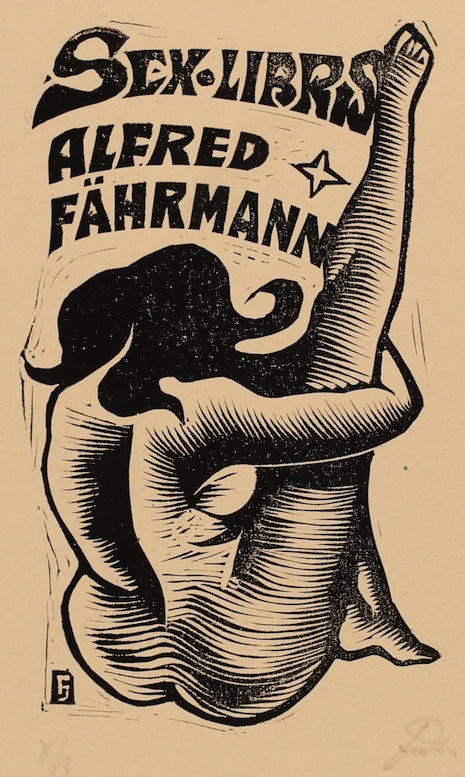
.jpg)
.jpg)
.jpg)

